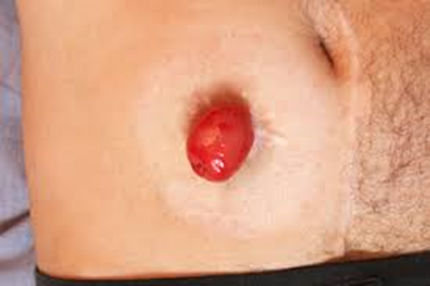A nurse is assisting with the care of a postoperative client who has developed malignant hyperthermia. Which of the following actions should the nurse take?
Administer meperidine IM.
Instill a warm enema solution.
Apply a cooling blanket.
Ventilate client with 50% oxygen.
The Correct Answer is C
Choice A Reason:
Administer meperidine IM is incorrect. Reason why it's not the answer: Meperidine (Demerol) is not recommended in cases of malignant hyperthermia. It can potentially exacerbate the situation by further increasing muscle rigidity and potentially contributing to the hypermetabolic state. Meperidine can trigger additional release of calcium from the sarcoplasmic reticulum in muscles, worsening the symptoms.
Choice B Reason:
Instill a warm enema solution is incorrect. Reason why it's not the answer: Introducing warm solutions can exacerbate the client's condition by further increasing body temperature. Malignant hyperthermia is characterized by a dangerous increase in body temperature, and adding heat through an enema would only make the situation worse.
Choice C Reason:
Applying a cooling blanket is recommendable. Reason why it's the answer: A cooling blanket is a recommended intervention for managing malignant hyperthermia. Lowering the body temperature is crucial in preventing further complications associated with the high fever. Cooling blankets help dissipate heat from the body, aiding in rapidly reducing the dangerously elevated temperature associated with malignant hyperthermia.
Choice D Reason:
Ventilate client with 50% oxygen is incorrect. Reason why it's not the answer: While providing oxygen support might be necessary as part of managing the overall condition, ventilating with 50% oxygen specifically may not directly address the core issue of rapidly cooling the body during a malignant hyperthermia crisis. Ventilation may be required, but the immediate concern is to cool the body to prevent complications arising from the elevated body temperature.
Nursing Test Bank
Naxlex Comprehensive Predictor Exams
Related Questions
Correct Answer is D
Explanation
Choice A Reason:
"I wish my sexual relationship with my partner was like it was before." This statement indicates a desire to return to the previous state, implying a sense of dissatisfaction or longing for the way things were before the ileostomy surgery, rather than acceptance of the current situation.
Choice B Reason:
"I have my partner empty the bag for me, so I don't have to look at it."While having a partner assist with bag management might indicate some level of adaptation, the statement implies avoidance or discomfort in dealing directly with the ileostomy. It may suggest a lack of full acceptance or adjustment to the presence of the ileostomy.
Choice C Reason:
“I look forward to having normal bowel movements again." This statement expresses a desire to return to the previous bodily function, indicating a longing for the way things were before the surgery rather than complete acceptance of the ileostomy as a new way of managing bowel movements.
Choice D Reason:
"I will attend a support group to help me handle difficulties when they occur." Attending a support group demonstrates a proactive approach toward acceptance and adjustment to living with an ileostomy. It shows the client's willingness to seek support, learn coping strategies, and engage with others facing similar challenges.

Correct Answer is B, A, C, E, D
Explanation
Clamp the catheter tubing distal to the sampling port for 15 min. By clamping the tubing distal to the sampling port, it allows urine to accumulate in the tubing, ensuring that the urine specimen obtained is fresh and not from the stagnant urine that has been sitting in the tubing.
Wipe the sample port with an alcohol wipe and let the alcohol dry. Cleaning the sampling port with an alcohol wipe helps reduce the risk of introducing contaminants into the sample during collection, ensuring a more sterile procedure.
Attach a sterile needleless syringe to the sample port and aspirate the specimen. Using a sterile syringe prevents contamination and allows for the collection of a clean urine sample directly from the catheter tubing, maintaining the sterility of the specimen.
Empty the urine into a sterile container labeled with the client identifiers. Transferring the collected urine into a sterile container labeled with the client's identifiers ensures proper identification and handling of the specimen for laboratory analysis.
Document in the client's electronic medical record that the specimen was sent to the laboratory. Documenting in the client's medical record ensures that there is a clear record of the specimen collection, its handling, and its dispatch to the laboratory for analysis, maintaining proper documentation and continuity of care.
Whether you are a student looking to ace your exams or a practicing nurse seeking to enhance your expertise , our nursing education contents will empower you with the confidence and competence to make a difference in the lives of patients and become a respected leader in the healthcare field.
Visit Naxlex, invest in your future and unlock endless possibilities with our unparalleled nursing education contents today
Report Wrong Answer on the Current Question
Do you disagree with the answer? If yes, what is your expected answer? Explain.
Kindly be descriptive with the issue you are facing.
